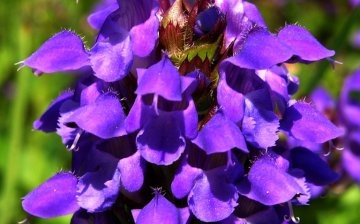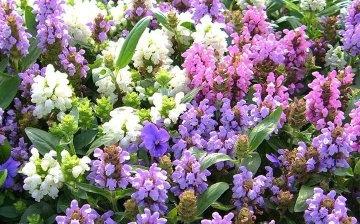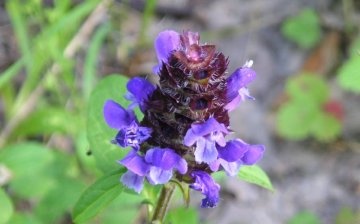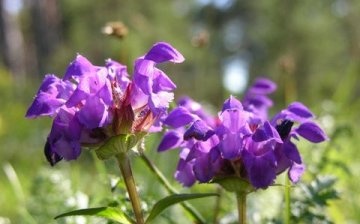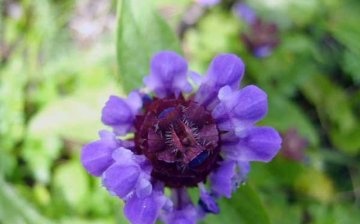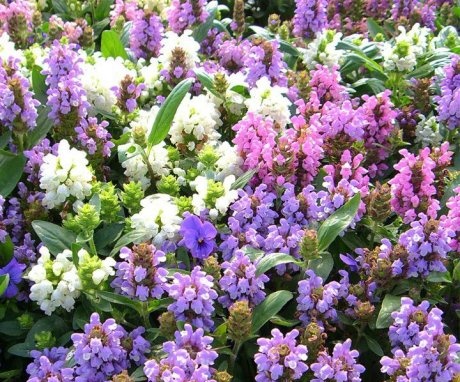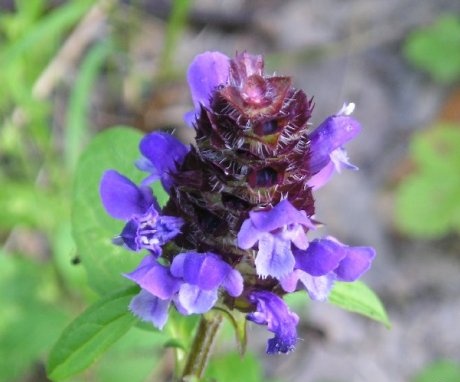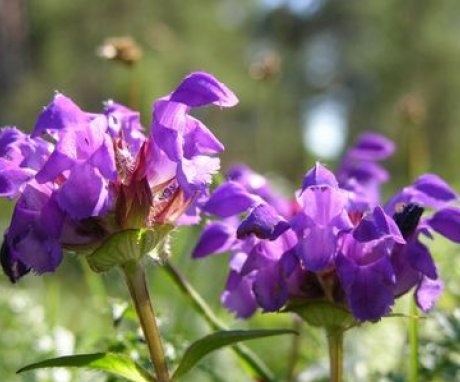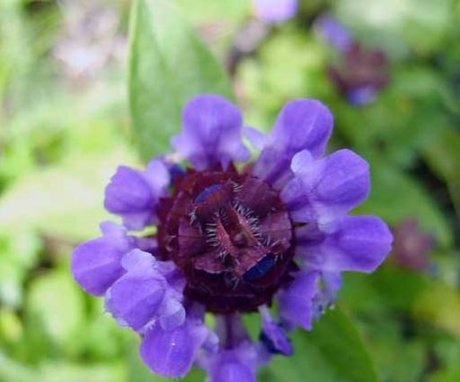Prunella - unpretentious perennial beauty in the garden
Prunella is a perennial plant that grows up to 60 cm, has a creeping rhizome and an erect stem. The leaves are oval, they have small, almost invisible denticles. The plant is very unpretentious. It blooms all summer. There are 15 types. In natural conditions, flowers grow in meadows and forests in Europe, Asia, North America, North Africa.
Content:
Description and varieties of perennial
In the wild, flowers in the form of spike-shaped inflorescences are purple, violet or snow-white. There are such types: Webb blackhead with purple flowers; common blackhead with red flowers.
But varieties grow in the gardens:
- with pink flowers - Pink Loveliness and Rosea
- with snow-white ones - Alba;
- with mauve - Loveliness;
- with red - Carmina
- with snow-white, pink, lilac - Pagoda
Gardeners plant it in mixboders, in rock gardens, in curbs, in rockeries, on slopes. The herb is used medicinally to treat colds and it stops bleeding. It contains tannins and essential oils. The plant is cut to the root in the summer when it blooms. After it is dried or immediately brewed. The broth caresses the throat for sore throats, stomatitis, or poured into the bath for skin diseases.
In order to prepare the broth, dry bumps-bracts and chopped grass are brewed in a thermos or put in a saucepan, poured with water and brought to a boil over low heat, then wait 5 minutes. Drink half a glass of broth three times a day. The sap of the plant stops the blood from cuts. The leaves are rubbed, put on the wound and a bandage is tied, then they are left on the wound for 3-4 hours until the leaves wither. Then the blood stops flowing, and the wound does not fester.
Breeding methods and planting
Prunella reproduces in the following ways:
- Reproduction by seeds. Seeds sown 10 weeks before spring in containers. Sprinkle the seeds on top and sprinkle them with soil 1 cm, water. The temperature in the room should be + 15-18 ° С. The first shoots will appear in a month. After another 10 weeks, plant the seedlings in open ground, they cannot be buried, they are planted at the same depth to which they grew in containers. Immediately after planting, water it abundantly, and also put a layer of mulch of 7 cm from peat under the plants, or sawdustso that the moisture does not evaporate strongly. As a rule, perennials bloom for 2 years after planting in open ground, but Prunella can bloom in the first year.
- Reproduction dividing the bushes... Dig holes 10-15 cm deep, and between the holes make an indent of 15-20 cm, and then plant the separated bushes.
- Prunella, which grows on the site, reproduces well by self-seeding. After flowering she develops a fruit similar to a nut. Due to the springy stalk, it sways and scatters seeds that sprout in August, and in September, the plants are already forming rosettes.
The plant is planted by seed in the house in early spring or by dividing the bushes also in early spring.
The plant is very fond of the sun's rays, but it can grow in partial shade.
If it is planted under trees, where it does not receive sunlight, then it may not bloom at all. Prunella prefers fertile loamy soils with excellent drainage and neutral characteristics - pH 6-7.5. But in principle, it grows on any soil.If you have acidic soil, then add lime, dolomite flour, ash to it.
Care Tips
Prunella loves moisture, because of this, it is necessary to constantly monitor so that the earth does not dry out. It is watered once a week, but thoroughly. Fertilizers pay only at landing. Comprehensive mineral fertilizer "Aelita-flower". You should not plant Prunella next to large plants, as they will shade her, then her peduncle will stretch out, she may not bloom.
Due to active growth, it is necessary to ensure that the plant does not take up space for other crops, dig up roots, and pick off faded flowers. Prune the plants 1/3 or 1/2 in the fall.
It is necessary to constantly pick off wilted flowers, then the plant will have an attractive appearance and bloom for a longer time.
For the winter, the plant is not covered, as it calmly tolerates frosts down to -30 ° C. Prunella is also not afraid of frost in the spring. Its easy and simple transplant.
Diseases and pests
Common pests and control:
- Aphid... The plant can breed black, green and other aphids, it feeds on juices and multiplies on the underside of the leaves. When aphids are affected, the stems and leaves look discolored, then the leaves curl, they turn yellow and dry out. Aphids give off a sweetish dew that ants eat, so they transfer aphids to other crops.
- Thrips. These are microscopic insects, they have a size of 0.5-1.5 mm and an elongated body, they drink the juice of plants. To eliminate aphids and thrips, plants are sprayed with a solution, adding 15 g of nicotine sulfate or anabasine to a bucket of water. It is advised to add 40 g of green soap to 10 liters of the solution for better adhesion.
- Scabbard and spider mite. To eliminate the scale insects, spider mites and aphids, a tobacco broth is made. Pour 400 g of makhorka into a bucket of water (10 l), leave for 1 day, then boil for 3-4 hours, then filter and add another 12 liters of water. Separately, another composition is made: 1 piece of laundry soap is added to 12 liters of water. The compositions are mixed, 1 liter of denatured alcohol is poured into them. This substance is washed and sprayed flowers. This is done in the evening, and in the morning the plants are washed with water.
- Nematodes. They are almost colorless, small worms. They live in galls - swellings on roots, in stems and leaves. To eliminate nematodes, the soil is treated with 0.5% thiophos solution or 40% formalin solution, and add 200-300 g of thiophos per plant, 100-200 g of lime, which is dissolved in a bucket of water and watered per 1 square meter. m.
- Caterpillars cabbage scoops. At night they eat leaves and flowers, and during the day they hide. They are collected and burned. Flowers are pollinated with dust. You can spray them in the morning or in the evening with a 0.2% solution of Parisian greens with lime.
- To eliminate bronze beetles, bear, earwigs, caterpillars of the beetle and the click beetle, which gnaw the entire plant, down to the roots, pollinate the flowers with dust.
- Slugs and wood lice. To fight slugs and wood lice on the ground near the flower garden, sprinkle a thin layer of superphosphate around the perimeter.
More information can be found in the video:
Prunella diseases:
- Gray rot. It occurs when there is excessive humidity in the air, if the flowers are planted too tightly, then they lack light. In case of illness, mold is visible on the leaves, stems, flowers. It is necessary to cut off the diseased parts and destroy them. Spraying with a 1% solution of Bordeaux liquid copes well with the disease.
- Fusarium. With it, the roots begin to rot, then the root collar, the shoots become brown, thin, and the leaves turn yellow. It is required to remove diseased flowers. The earth is spilled with 1% formalin solution, using 15-20 liters per 1 sq. m and covered with a tarp.
- Rust. The disease manifests itself in the form of orange-red pads. Leaves fall off, shoots become crooked, buds do not grow. The diseased parts of the plant are cut off and burned, and the plant itself is sprayed with a 5% solution of ferrous sulfate.
But Prunella is quite resistant to diseases and pests... It is unpretentious in maintenance, grows very quickly and begins to look like a dense green carpet, preventing it from growing weeds.



